Here's the presentation David Einhorn just gave to a room of elite hedge fund managers
Einhorn Robin Hood Presentation 2016

Here's the presentation David Einhorn just gave to a room of elite hedge fund managers
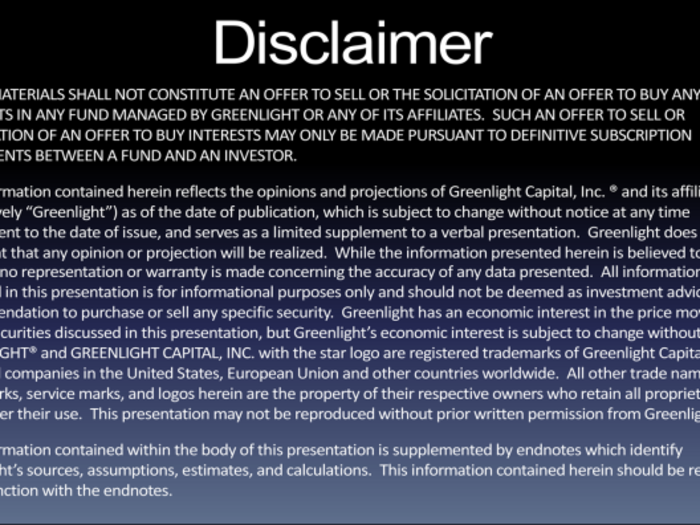
This is a story about a newly engaged couple.
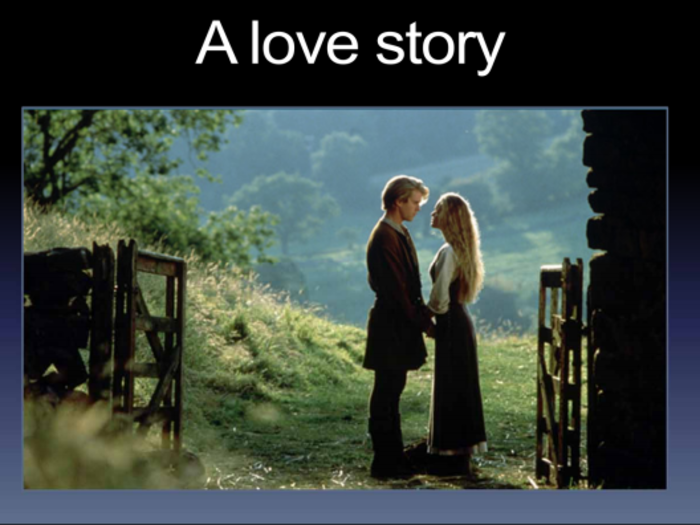
As with all love stories, there is conflict, and an uncertain ending. Will something get in the way of true love. Or will they consummate the marriage and live happily ever after?
Our couple is Bayer and Monsanto
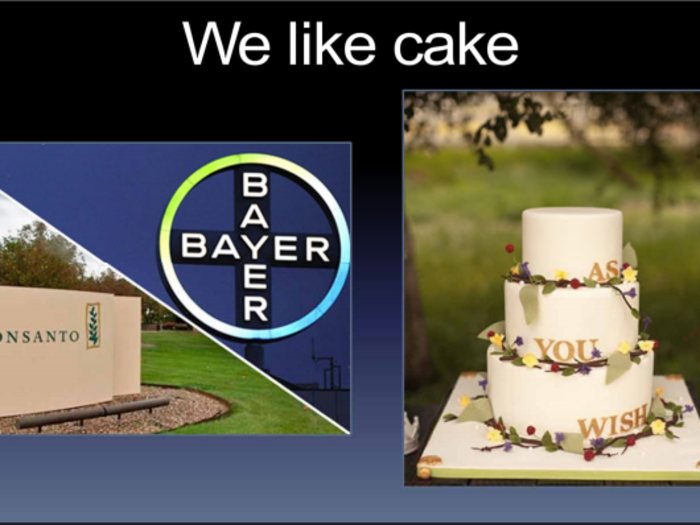
As I walk you through their journey, there is one thing you need to keep in mind: Whether they make it to the altar, or get thwarted along the way, there’s going to be a celebration for Bayer shareholders either way. With cake. And we like cake.
A few years ago, I was a bear on Bear; today I am a buyer of Bayer.
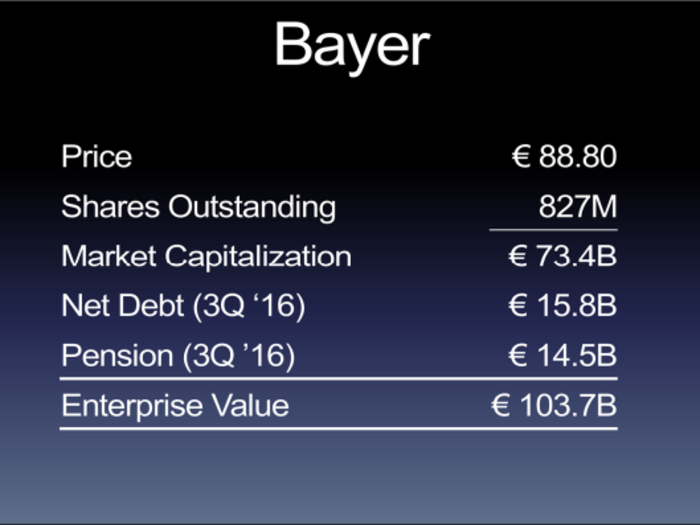
Bayer is worth about 73 billion Euros with an Enterprise value of 104 billion Euros. Historically a chemicals and pharmaceutical company, Bayer is transforming into a life sciences company. It spun off Lanxess in 2005, and is now shedding Covestro, its remaining chemicals business.
Think of Covestro as the ex‐boyfriend in need of a new mate – one more compatible with its cyclical nature.
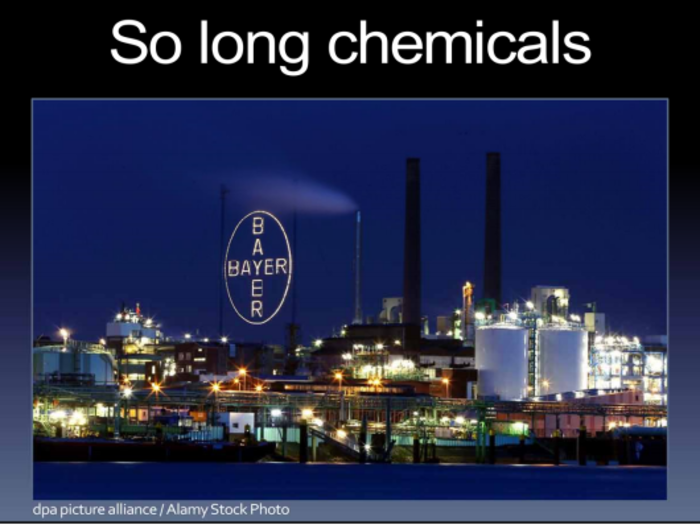
Last year Bayer sold 31% of Covestro in an IPO, with plans to divest the rest.
What remains is a premium life sciences business with high barriers to entry and an excellent competitive position.
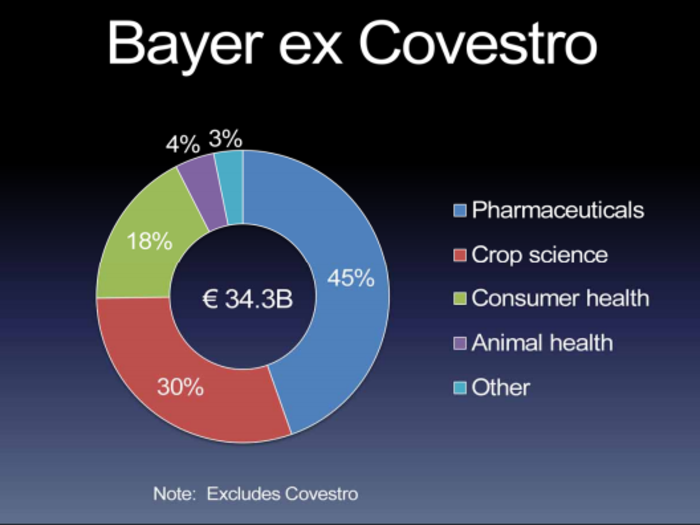
It is made up of four primary divisions: Pharma, crop science, consumer health, and animal health. In 2015, it had total revenue of 34.3 billion Euros.
With the ex gone, the market expected Bayer to further solidify its pharma business by courting a clean‐shaven, well‐to‐do pharma partner.
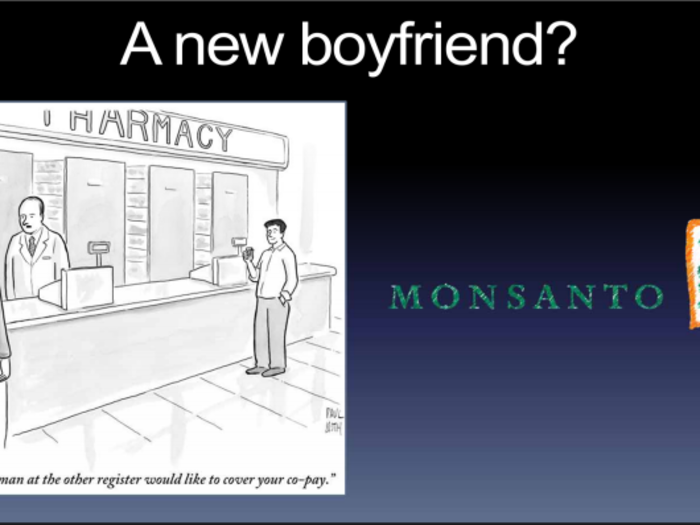
Instead, it decided to go with a rough cut, crop sciences dude named Monsanto, and the market did not respond well.
The stock had already been falling from the mid 130s last July to about 100. A couple late stage pipeline products disappointed.

The continued ag cycle weakness caused earnings expectations for 2016 to come down from a high of about 8 Euros per share to a low of 7.25. When Bayer announced this corny acquisition, the stock collapsed to 85 Euros per share, or only 11.3x earnings.
The market is divided on how it views the deal.
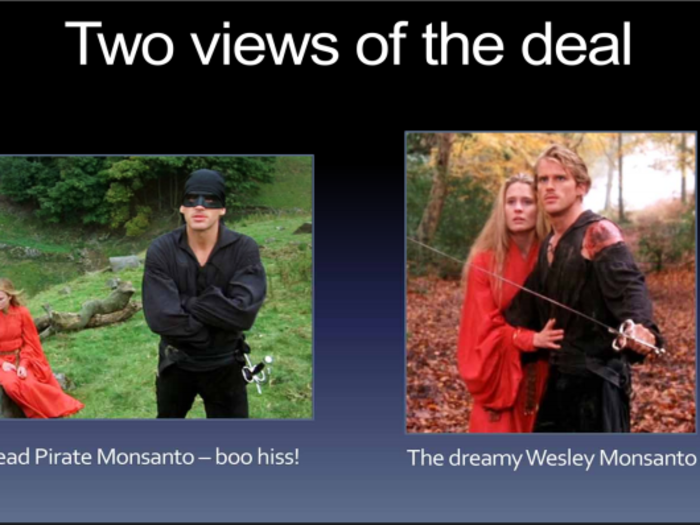
There are those who look at Monsanto as a terrible partner and want nothing to do with it. Some of those investors sold their stock on the announcement, and would be happy to buy
back in if the couple breaks up. And then there are the investors who like the pairing, but see obstacles on the way to the altar. They won’t join the party until the marriage is consummated and the wedding is paid for.
And that’s where things stand now.
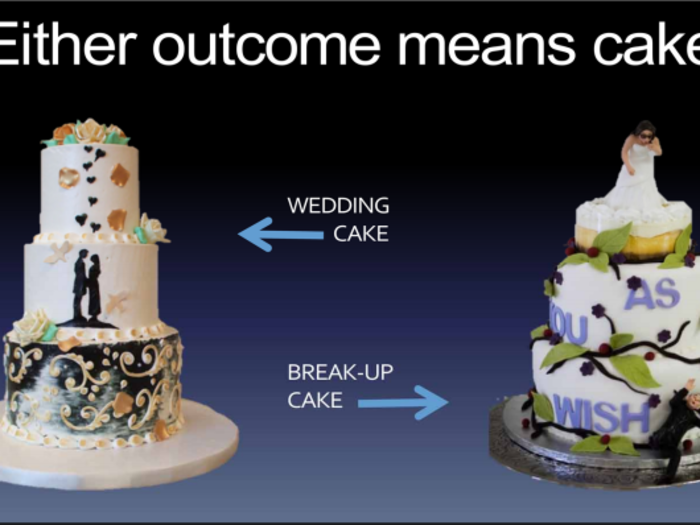
Some investors only want wedding cake, others only want break‐up cake, and neither group seems to want to own the stock until it knows which cake will be served. We think that’s the opportunity. We can buy the stock knowing that there will be a party either way. And though we think wedding cake is a little better than break‐up cake, both outcomes come with cake. And again, we like cake. Let’s start by looking at break‐up cake, or how Bayer looks like on its own.
Bayer’s pharmaceutical division has been around forever.
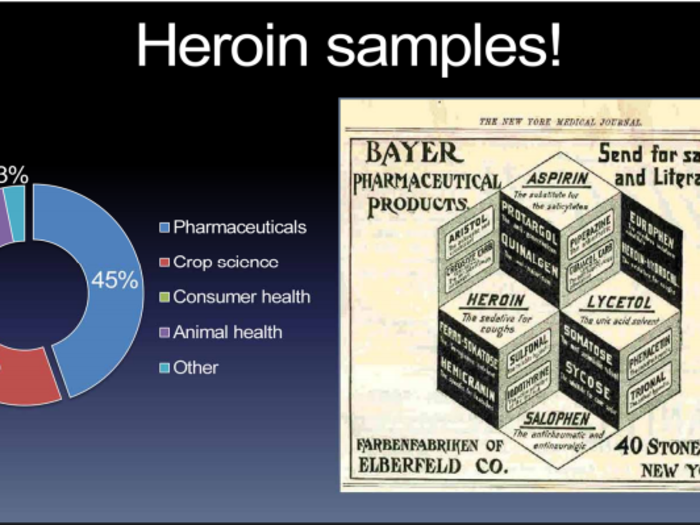
Some of its 100‐year‐old products look familiar (though they no longer sell heroin) but you’re likely to recognize its current drugs only if you or a loved one suffers from…
Heart trouble, brain trouble, skin trouble, diabetes, cancer, hemophilia, certain eye diseases, some infectious diseases, various gynecological conditions, erectile dysfunction, or all of the above.
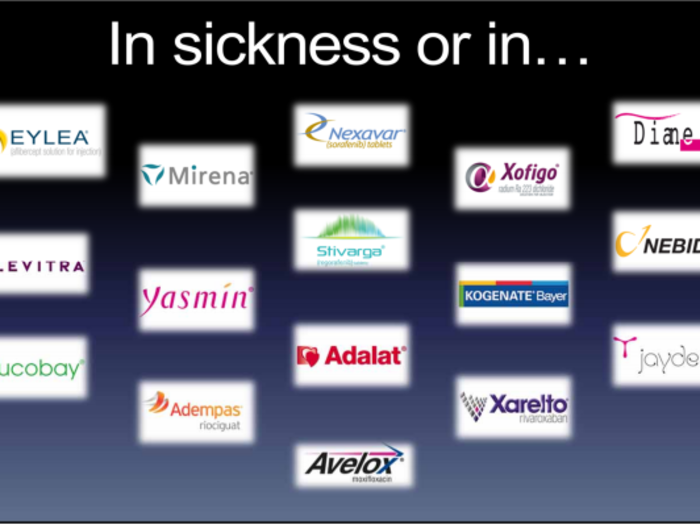
Bayer’s two biggest selling drugs are Xarelto and Eylea.
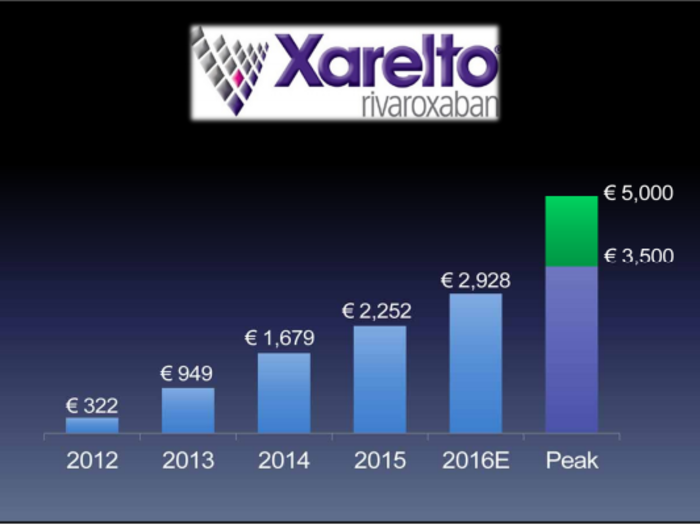
Xarelto is a blood thinner which is replacing Warfarin, a very old drug with nasty side effects. It reduces strokes and Bayer is conducting studies for additional indications. In the third quarter of 2016, Xarelto revenues grew 35%. In September, management increased its estimates of annual peak sales from 3.5 billion Euros to over 5 billion. In response, the market yawned.
Eylea treats macular degeneration and all I can say without cringing is that involves eyes and needles.
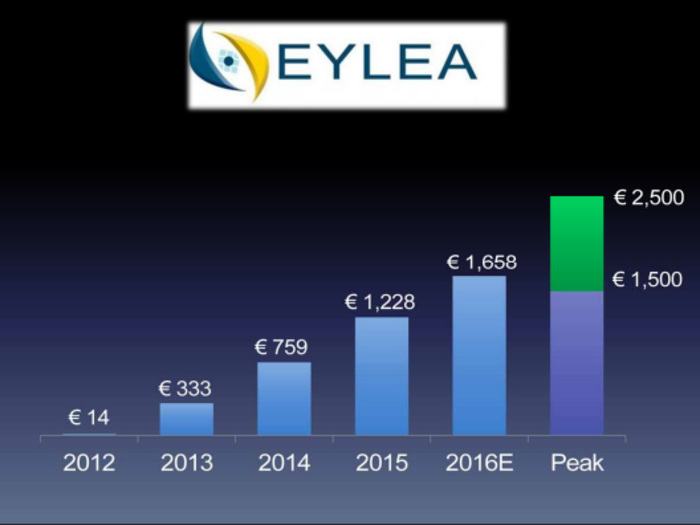
In the most recent quarter, Eylea grew 28%. In September, management increased its estimates for annual peak sales from 1.5 billion Euros to over 2.5 billion and the market yawned about this, too. It makes us wonder if Bayer has any drugs in the pipeline to treat inappropriate yawning.
Not only are its key products in growth mode, but Bayer also has a favorable patent cliff, with nothing significant expiring for many years including Eylea and Xarelto.
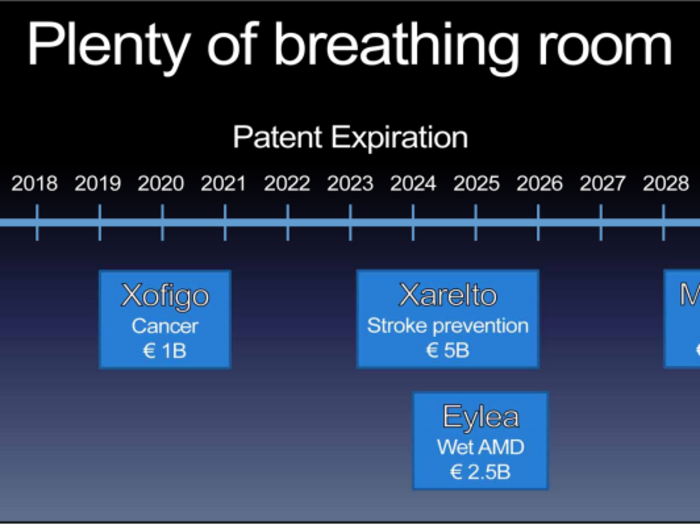
And not all patent cliffs are cliff‐y. Eylea and the hemophilia drug Kogenate are biologics.
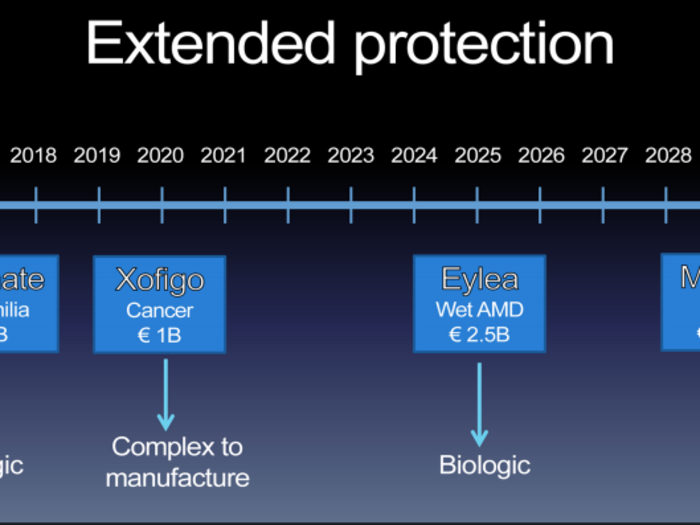
Biologics are difficult to reproduce, so competition will be slow to market, and sales will fall off gently. And the manufacturing for its cancer drug Xofigo requires access to a nuclear facility, so not just anyone will be able to produce a generic. The Mirena IUD and Kogenate should have longer exclusivity as a result of something called Lifecycle Management.
Lifecycle management involves tweaking a drug just enough to make it eligible for a new patent or an extension.
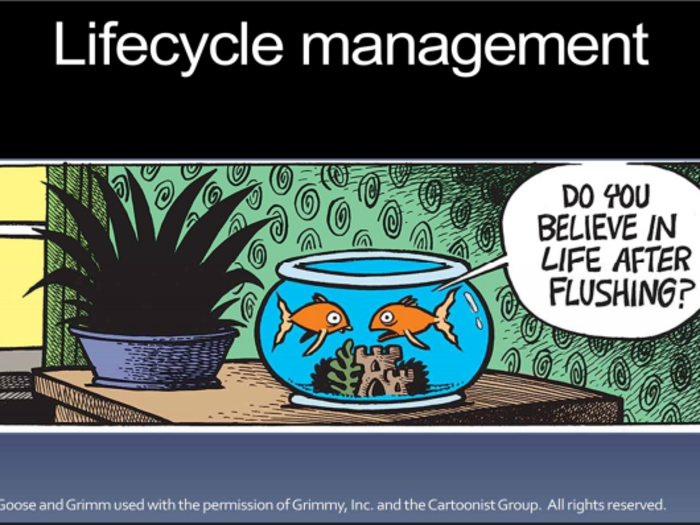
It’s a bit like when my pet goldfish died. My mom kept secretly replacing Lambeau with a new goldfish until she finally agreed to get me a brother.
The Mirena IUD lost its first patent in 2015, but Bayer has been able to extend protection through 2029 by developing a new inserter.
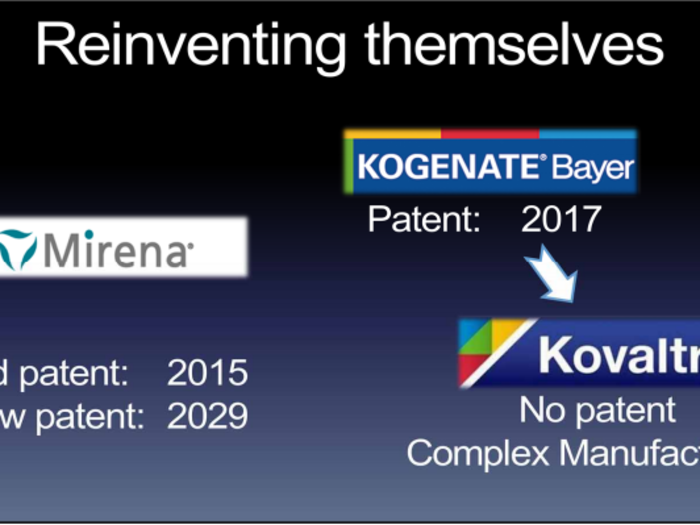
Sales grew 18% last year. In the case of Kogenate, the patent isn’t for the compound itself, but rather for its hard‐to‐replicate manufacturing process. That patent expires in 2017. That’s why, starting in the first quarter of 2016, Bayer is gradually replacing Kogenate with Kovaltry, a similar but longer‐acting hemophilia drug that magically uses the same manufacturing facilities. In 2018, Bayer will add Damoctocog alfa to the hemophilia franchise, putting itself one more step ahead of generic competition.
Losing a patent doesn’t necessarily lead to losing sales.
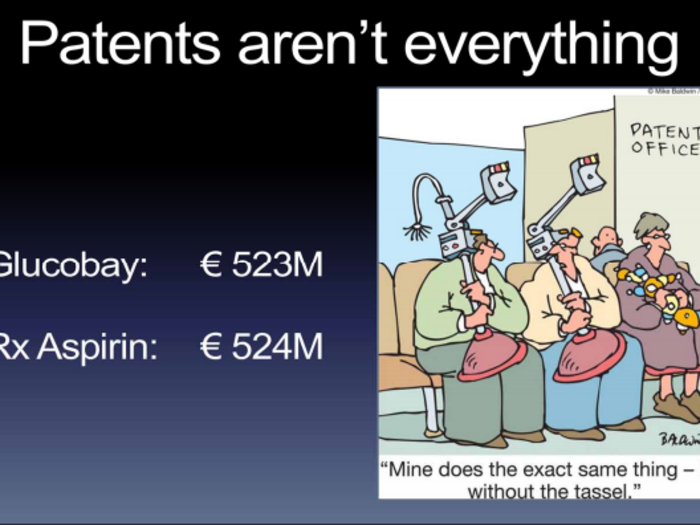
Bayer’s non‐patent‐protected diabetes drug Glucobay and prescription aspirin, which hasn’t been under patent for about a hundred years, each grew over 2% to over half a billion Euros in 2015. This performance was typical of Bayer’s 8 billion Euro off‐patent portfolio.
This is Bayer’s new drug pipeline.
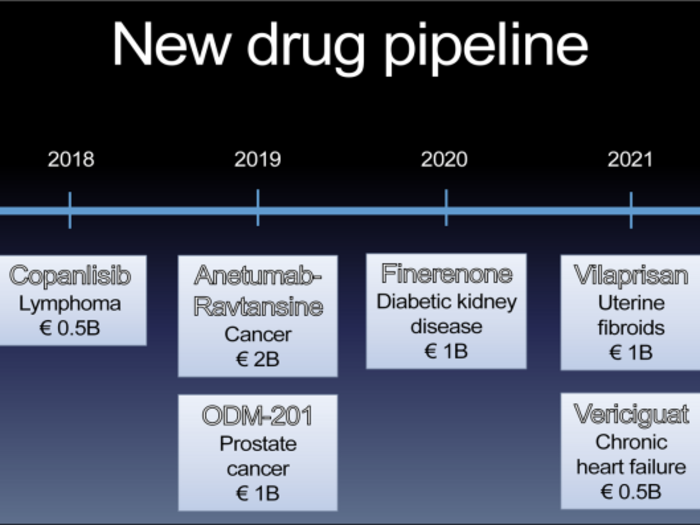
Bayer is developing new drugs for cancer, lymphoma, chronic heart failure, diabetic kidney disease, and uterine fibroids. These are all small opportunities, which means that the earnings trajectory for the next few years isn’t very dependent on clinical trial outcomes.
Bayer estimates that the potential revenue value of these pipeline drugs is 5 billion Euros.
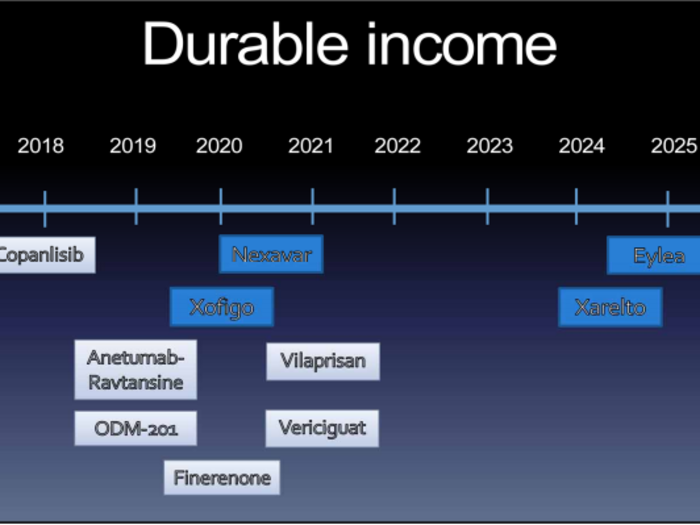
And most of the new pipeline is expected to come online prior to the expiration of existing patents.
Some U.S. competitors have taken massive price increases on drugs over time, and the publicity has sparked discussion about regulatory backlash.
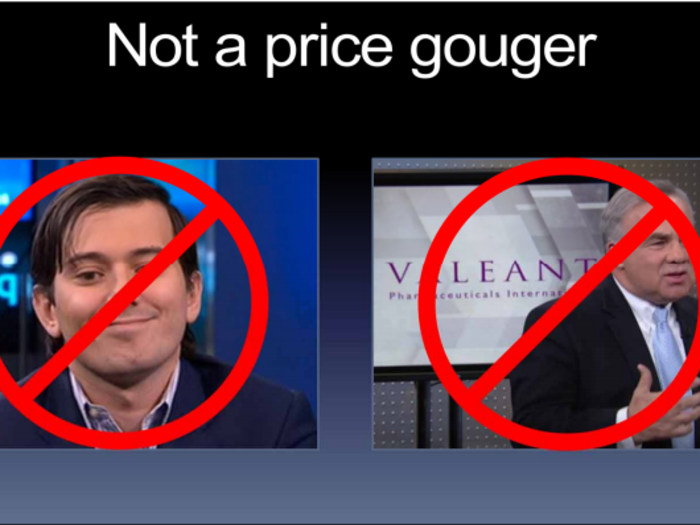
Bayer mostly hasn’t engaged in this, and its sales in Europe and Japan are already subject to price controls. Compared to its peers, Bayer is less exposed to future pricing pressure.
The pharma business is growing well and is under appreciated. Pharma peers with pipeline worries trade in the low teens.
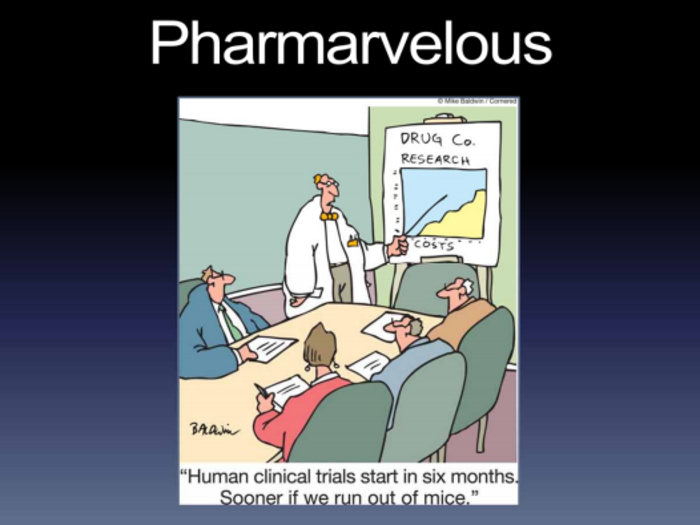
Peers with good profiles, like Roche, Sanofi and GSK trade around 14x earnings. Bayer has a portfolio of established drugs in the middle of their growth curve, a pipeline of new drugs coming out in the next 3‐4 years, no imminent patent expirations, and strategies to extend those at risk. All told, we think Bayer deserves a premium multiple to the group.
In addition to pharma, Bayer also has a solid consumer health business. At 6 billion Euros of revenue, it’s 18% of total sales.
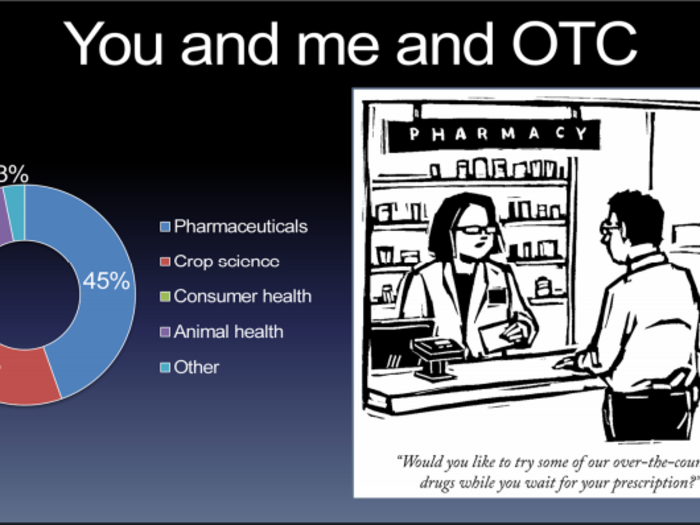
Odds are several of these are in your medicine cabinet, like Claritin and Aleve.
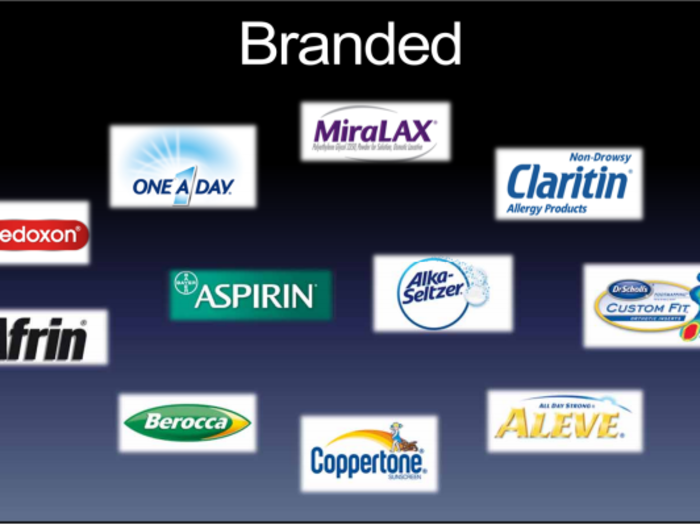
Or in your beach bag like Coppertone. Or under your feet like Dr. Scholl’s. Or next to your Bloomberg terminal, like Alka‐Seltzer. These are familiar brands which are growing moderately and have good margins. Other companies with brands like these, such as Procter & Gamble and Colgate‐Palmolive, trade at low 20s P/E multiples.
Bayer also has a small animal health business that consists of vaccines and antibiotics for household pets and livestock.
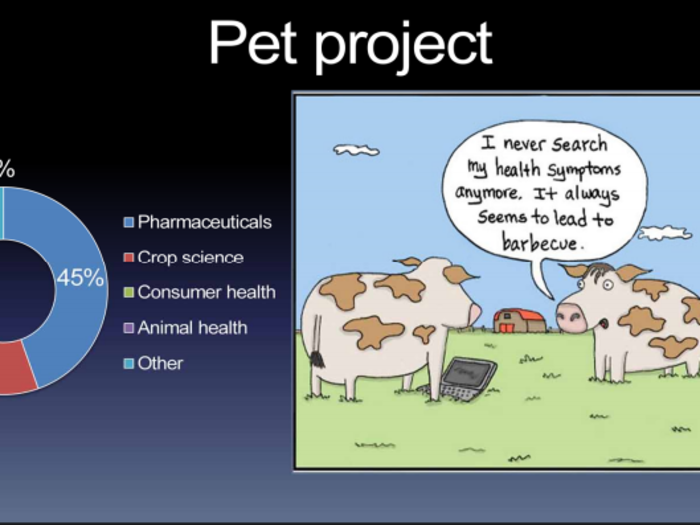
Animal health is an attractive sector with low‐to‐mid single‐digit top line growth and strong EBITDA margins of around 23%. Within Bayer, it’s overlooked and under appreciated. With time, Bayer is likely to beef it up or monetize it. Zoetis is the best comp and trades around 21x earnings.
And now we get to crop science, the other “farm‐a” business.
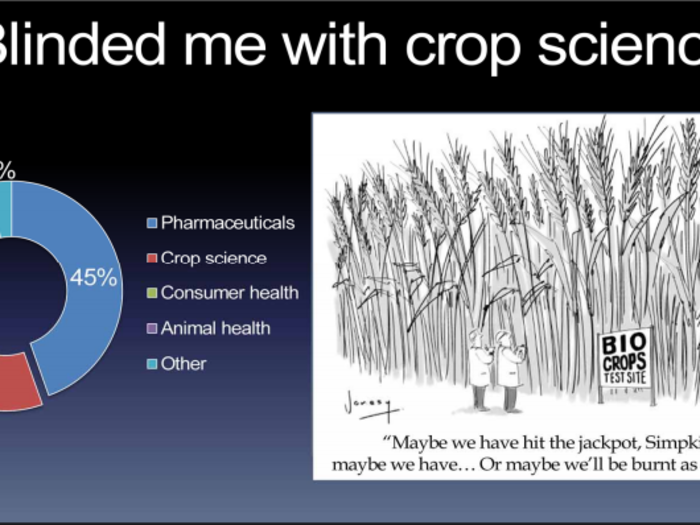
Bayer is the world leader in crop protection, which involves a lot of “‐cide action” – as in insecticides, herbicides, and fungicides.
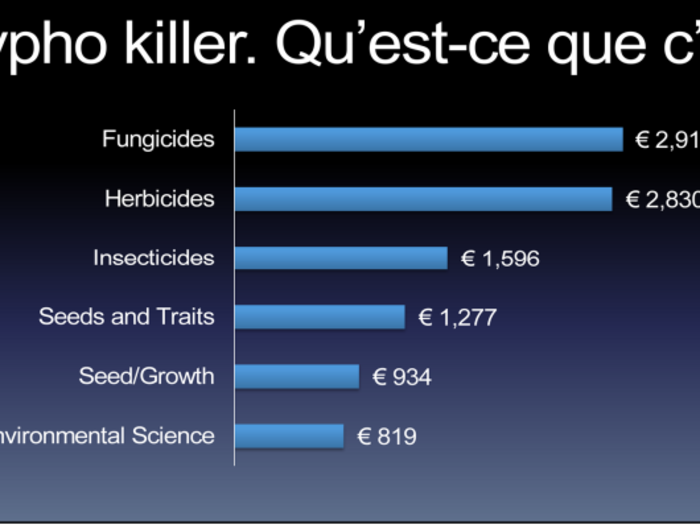
From 2011 through 2016, sales in Bayer’s crop business have grown 40%. Because the business is focused on crop protection instead of seeds, Bayer has been relatively immune to the current down cycle in agriculture.
The Bayer crop science business has some of the best elements of the pharma business.

Many of its products have intellectual property on more than one ingredient and formulations that provide barriers to entry beyond their patent life. Peers like Syngenta and DuPont trade closer to a 20x P/E multiple.
Bayer stand‐alone trades at 11x 2017 earnings, which is a sizable discount to the value of its lowest multiple ongoing business. We think it’s cheap, but you don’t have to take our word for it.
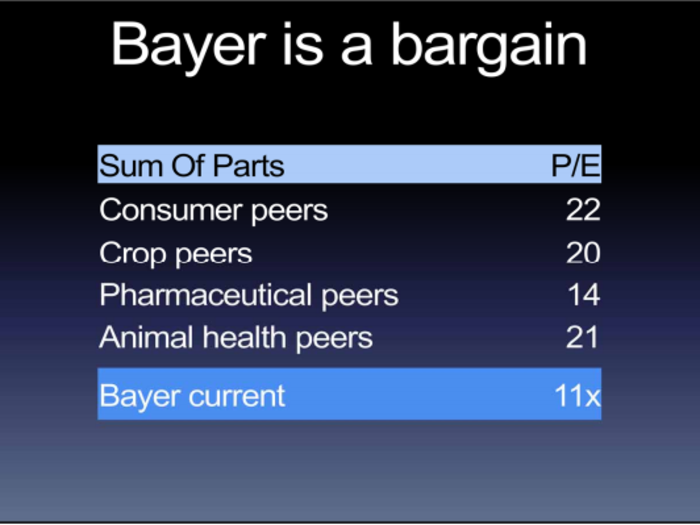
Remember that before the deal was announced, Bayer was trading at a 14x multiple.
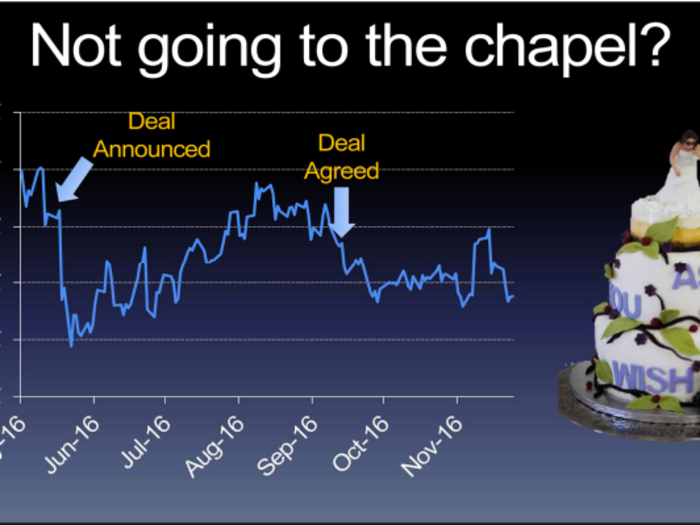
Since May, expectations in pharma have improved and most everything else is unchanged, but the stock trades with a big penalty for the possible Monsanto deal. It seems to us that if the deal breaks, the stock should recover. There would be a good party for Bayer shareholders. With cake. And we like cake.
Why would anyone like to see them not make it to the altar? Let’s meet the fiancé.
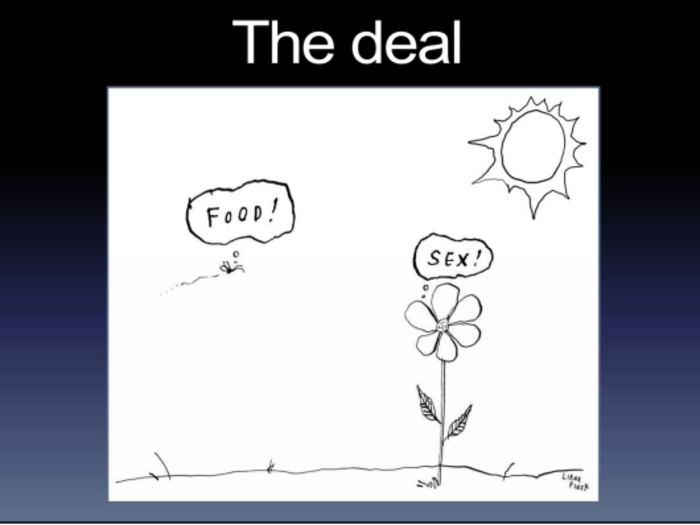
Monsanto is the world’s largest developer of genetically modified seeds.
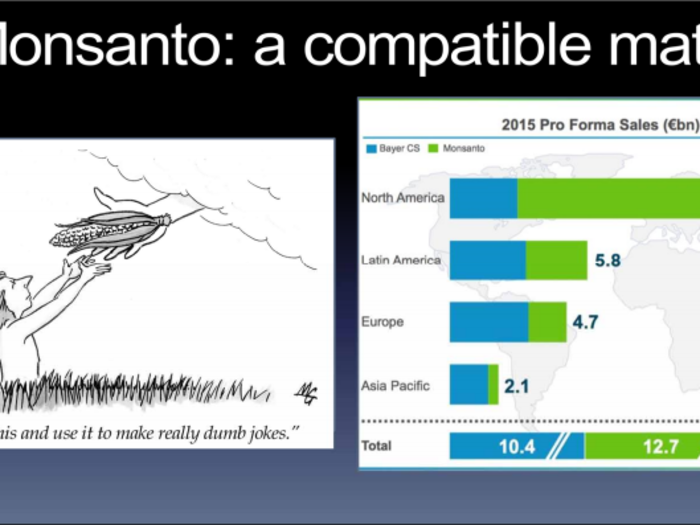
It is also the inventor and largest producer of Roundup, the most widely sold weed killer in the world. It does 76% of its business in the United States, Brazil and Argentina, in contrast to Bayer, which is much more focused in Europe and Asia.
The value of agriculture is shifting from land and labor to technology. This is where Monsanto and its intellectual property dominates.
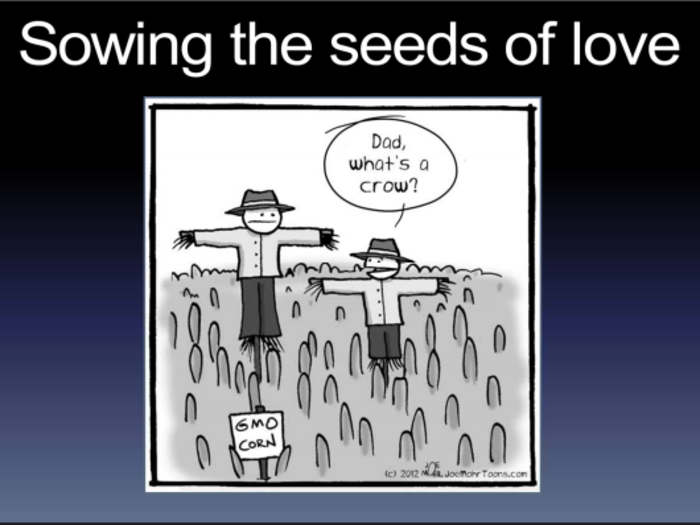
Monsanto develops most traits that go into seeds. Monsanto sells the seeds to farmers and also licenses the traits to other companies. Farmers have to choose between an inferior harvest or paying Monsanto, directly or indirectly, a royalty for its technology. Monsanto grabs an increasingly large slice of the agricultural pie, with great margins worthy of a fancy multiple. Monsanto is in a commodity business, but it is not a commodity.
This is appealing to anyone who recognizes that food production is increasingly reliant on GMOs. But not everyone is on board.
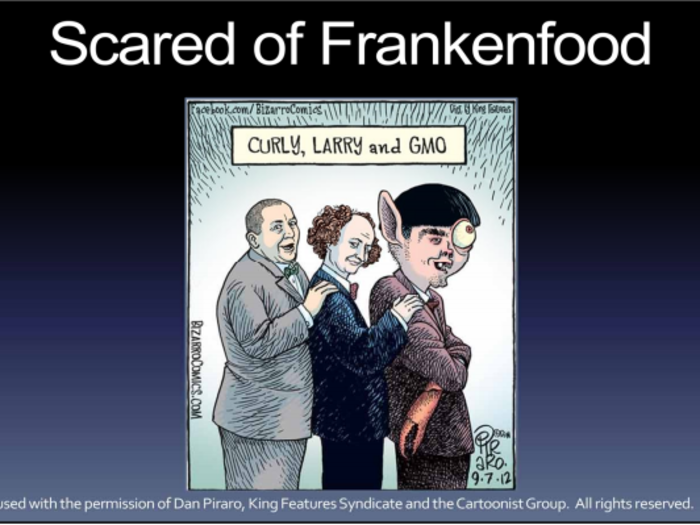
Europeans in particular have objections to GMOs, and are especially put off by Monsanto’s reputation as the company that brought us Agent Orange. And some investors simply aren’t interested in expanding the crop science business at all.
But what about the people who want wedding cake?
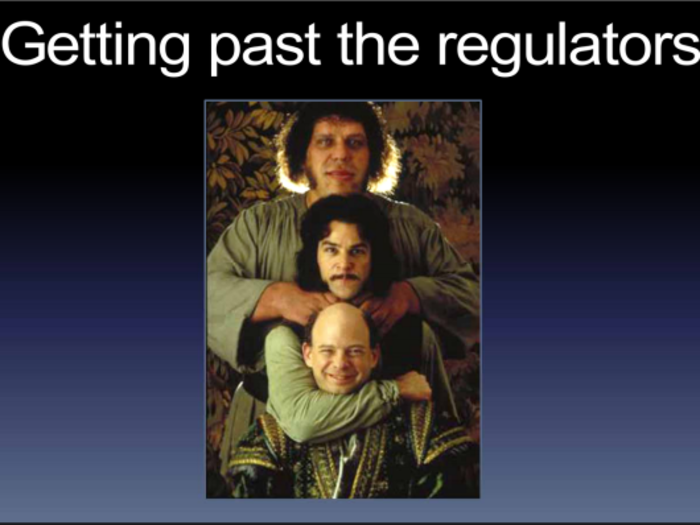
For them, the deal has to get past the regulators, and there are concerns that it won’t close. Certainly, the market thinks it probably won’t, as Monsanto stock at $102 trades at a huge discount to the $128 deal price.
The first hurdle is product overlap, and although there isn’t a lot between the two businesses, there is some.
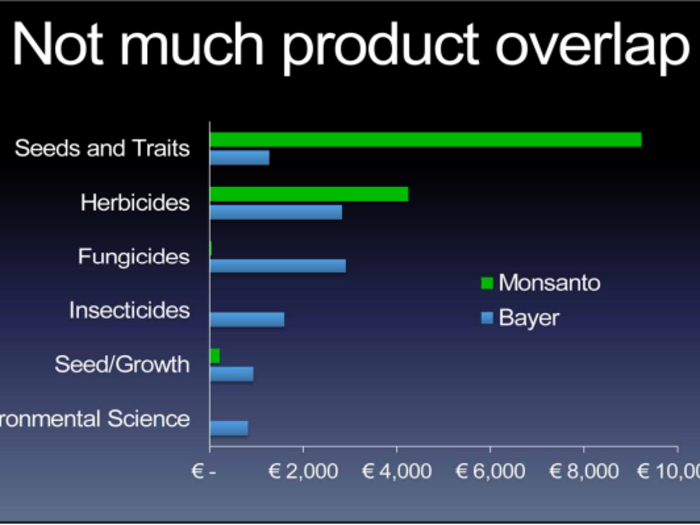
Specifically, Bayer may have to divest some of its cottonseed and herbicide products. The street estimates the direct overlap to be $1.2 billion of sales, which leaves a cushion to the $1.6 billion that Bayer has agreed to divest if necessary to satisfy regulators. We think there is also concern that regulators may mistakenly confuse Bayer’s acquisition of Monsanto’s existing monopoly with an anti‐competitive merger, even though the merger itself would not increase market concentration.
Another anti‐trust concern is that there are a lot of agricultural deals right now: Syngenta and ChemChina, Potash and Agrium, Dow and DuPont.
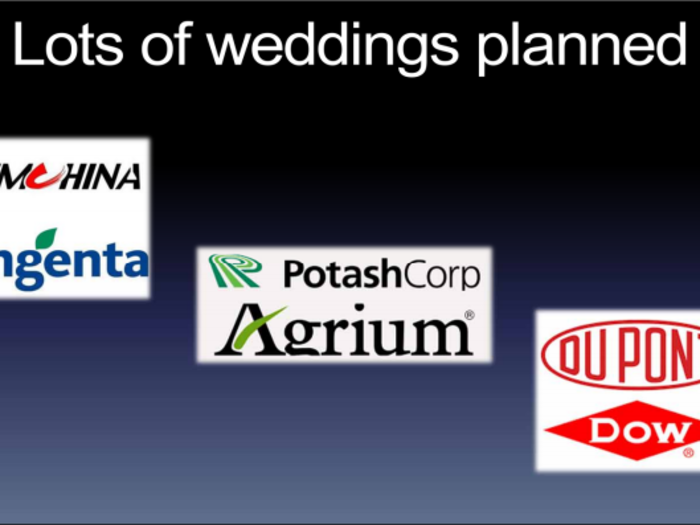
The Senate Judiciary Committee has held hearings to address concerns over the ag industry consolidation and may raise objections to the combined impact of all the mergers.
This deal is the largest all‐cash takeover on record, and with a headline price of 28 times earnings, the purchase doesn’t seem cheap.
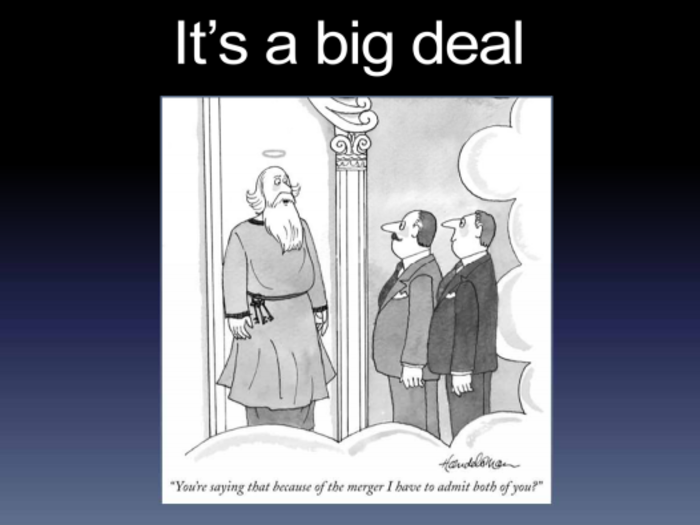
And worse, Bayer plans to fund a portion of the purchase with an equity rights offering, which creates a perceived overhang on the stock.
But the headline price doesn’t tell the whole story. Monsanto is a great business with a pipeline of its own. It earned $4.48 this fiscal year.
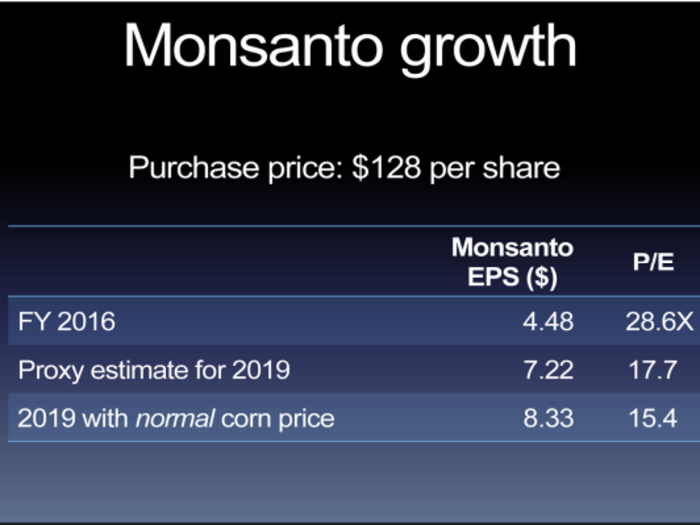
The proxy projects a couple of scenarios with average earnings of $7.22 in 2019. We believe that if corn returns to a normal price of $4.50 a bushel, it will add more than a dollar to those projected earnings.
Together, Bayer and Monsanto hope to cut costs and raise revenues.
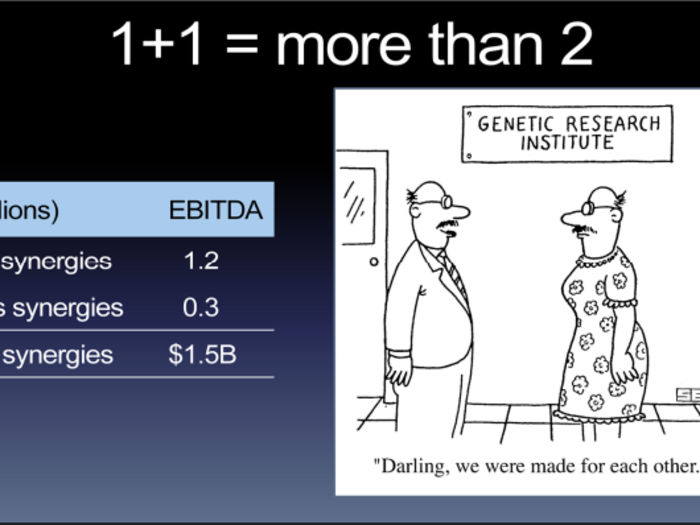
The deal is supposed to close at the end of 2017. By the end of the third year following the close, Bayer thinks it can save $1.2 billion by cutting duplicate sales and marketing organizations across the globe, and increase earnings by an additional $300 million by selling its current products into additional markets.
Bayer and Monsanto expect to achieve gains in R&D as well.
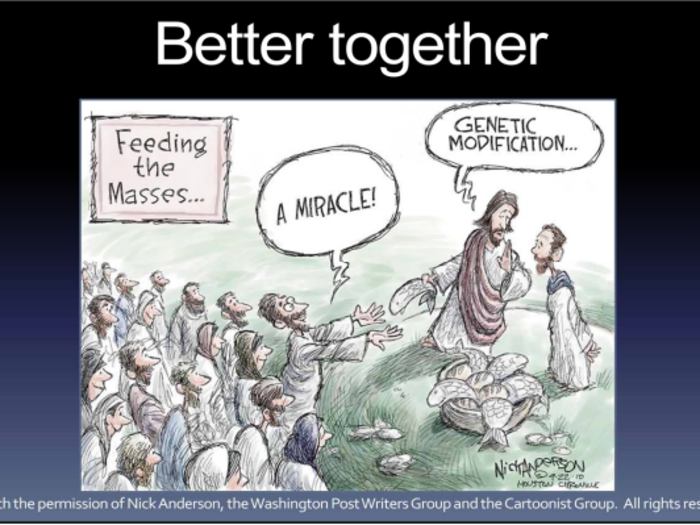
The future of the agricultural products business is in selectivity; crop protection needs to kill pests and weeds, but not crops. Today, Monsanto has independently developed seeds, and Bayer has independently developed crop protection. Together the combined company hopes to develop insecticides that work with the specific seeds to make better complimentary products.
Adding the $1.5 billion in synergies adds another $2.60 to Monsanto’s earnings, which brings the multiple down from 28 to about 12.
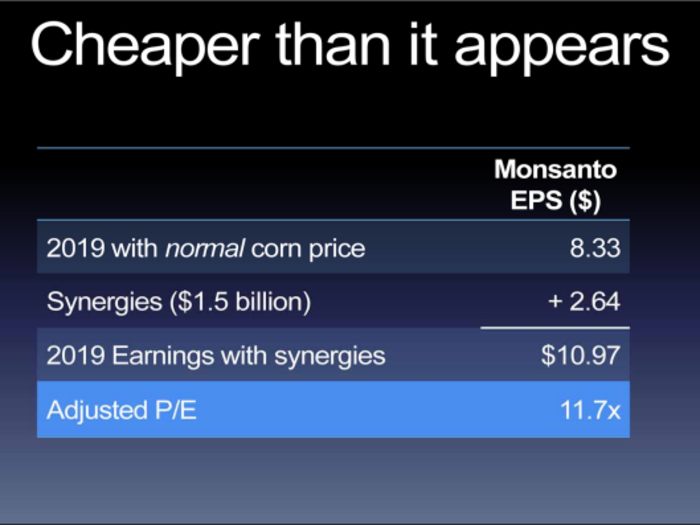
Here is a multi‐year pro forma Bayer combined forecast, the year after the deal closes, assuming $4.50 corn and Bayer divesting Covestro.
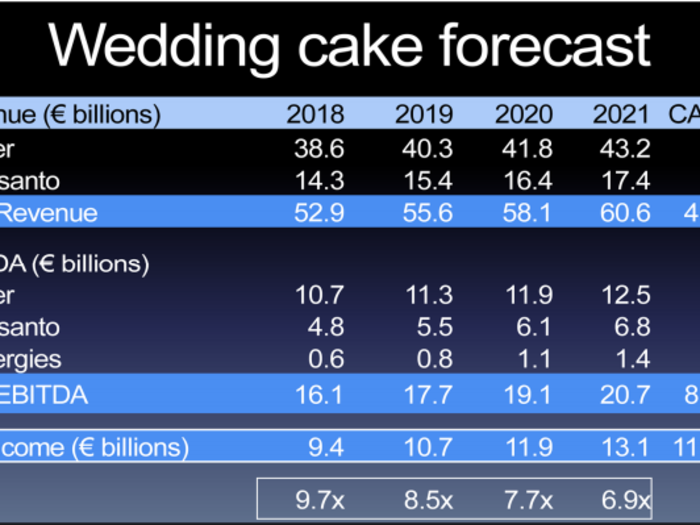
In the first year, Bayer will generate pro forma EBITDA of 16.1 billion Euros. Working down the income statement, there will be 1.6 billion Euros of Depreciation, 2 billion of interest on 58 billion Euros of pro forma debt, and 25% taxes to get net income of 9.4 billion Euros, or about 10x the pro forma earnings, which takes into account the coming equity dilution. From there, mid‐single digit revenue growth with synergies ramping should drive high‐single digit EBITDA growth and double‐digit earnings growth for the next several years.
While some now‐former Bayer shareholders were upset with paying 28x for Monsanto and its monopolistic seed business, if you buy Bayer’s stock today, you aren’t paying 28x.

On a combined basis the business will be 48% agriculture, 36% pharma, 13% consumer brands, and 3% animal health. We actually bought a bunch of cakes to make this slide. The Greenlight kitchen was very crowded that day. All of these businesses deserve multiples of 14 22 times, and people buying Bayer today get the package for about 10x, if the merger closes.
So Bayer is stuck between two good options: Get fat on wedding cake, or get fat on break‐up cake. We prefer a deal to no deal, but at this price, either way, we get cake.
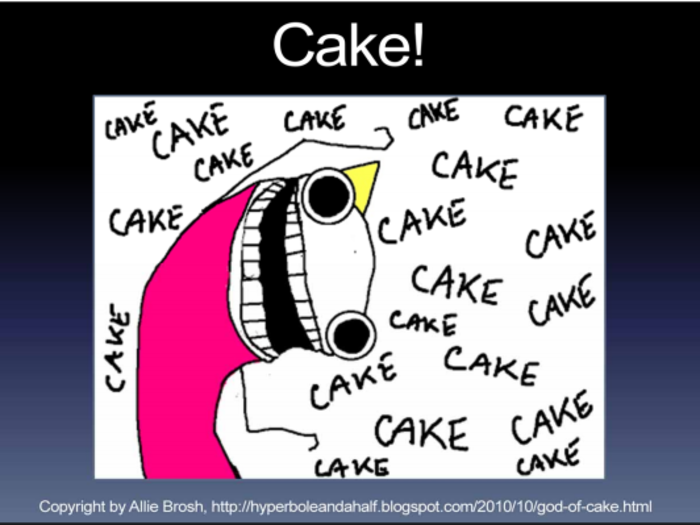
Here's the presentation David Einhorn just gave to a room of elite hedge fund managers

Popular Right Now
Popular Keywords
Advertisement